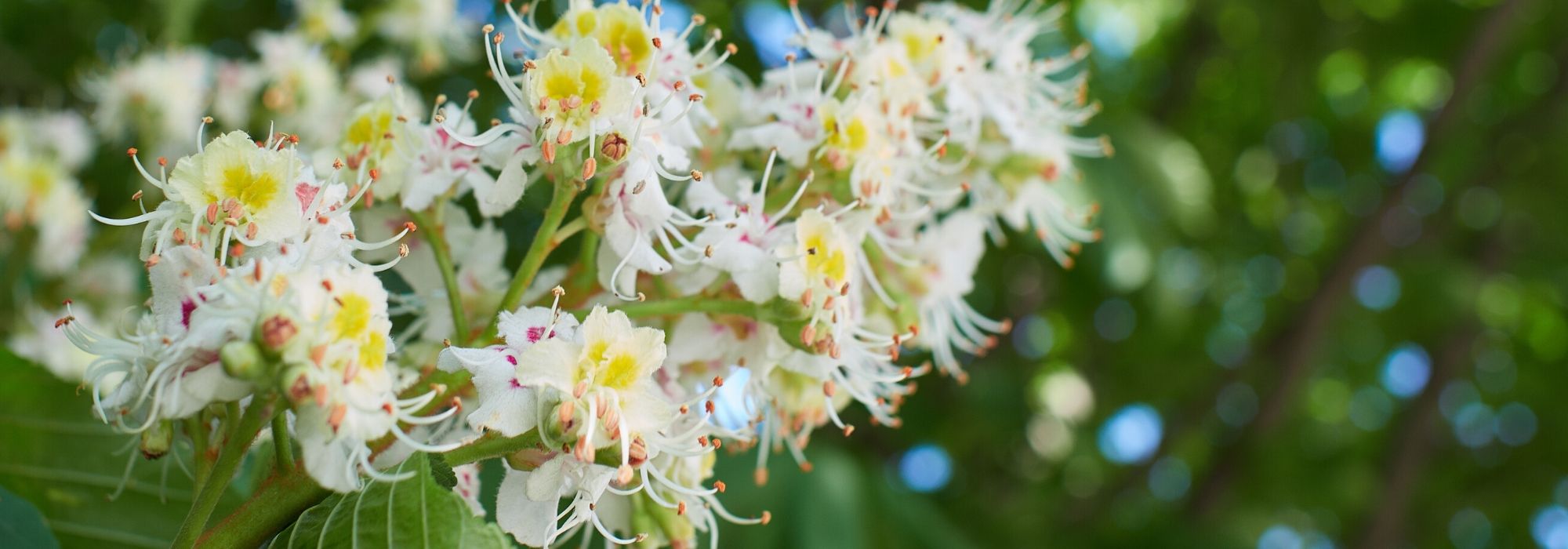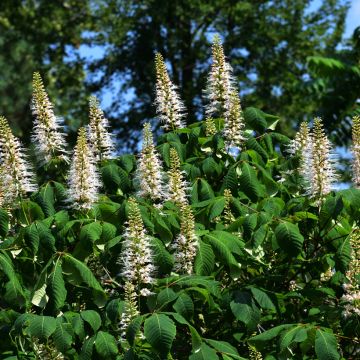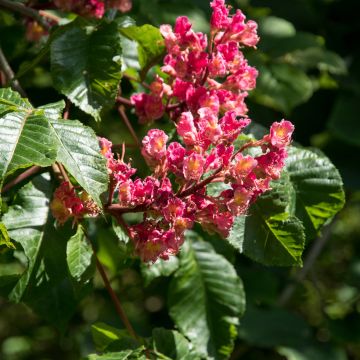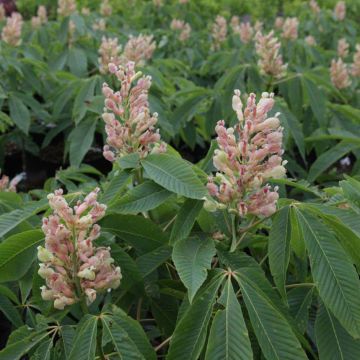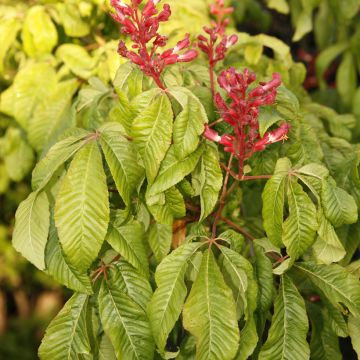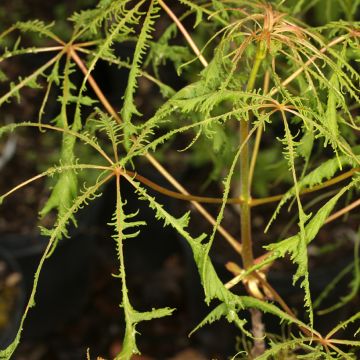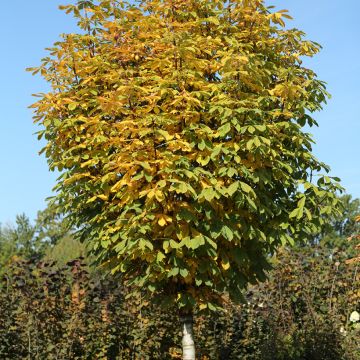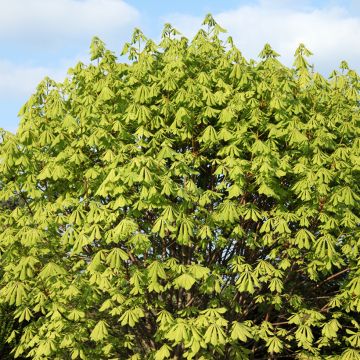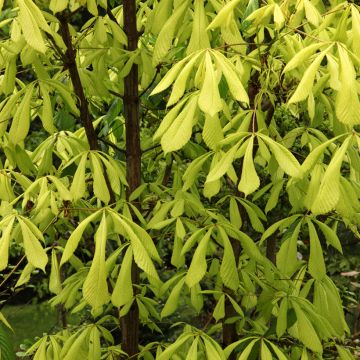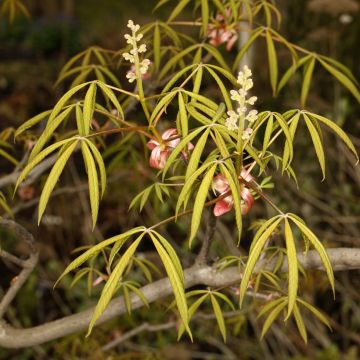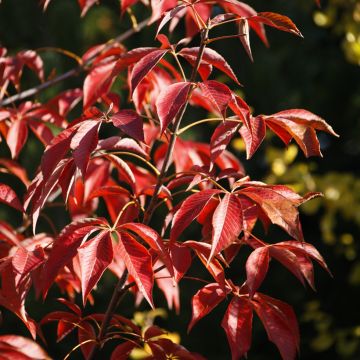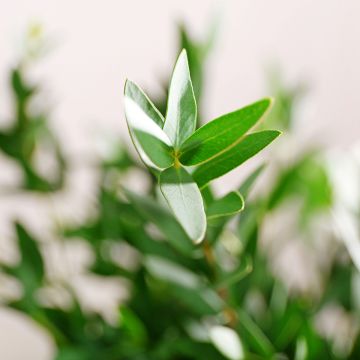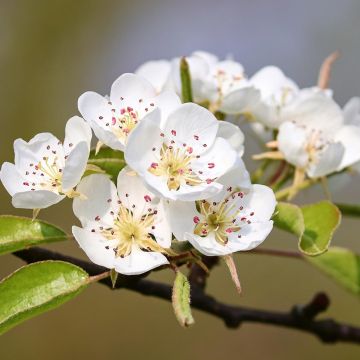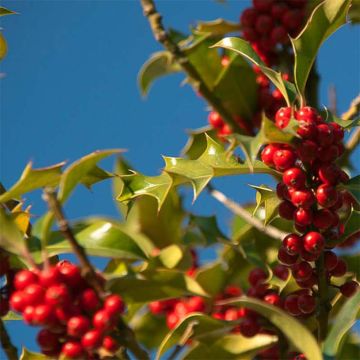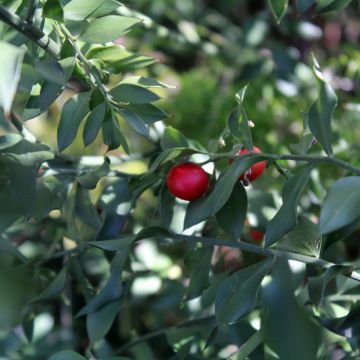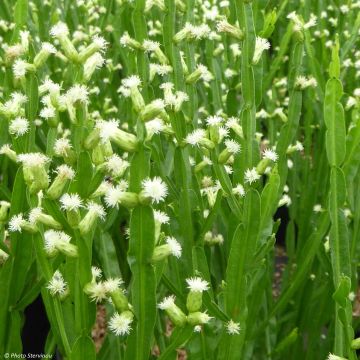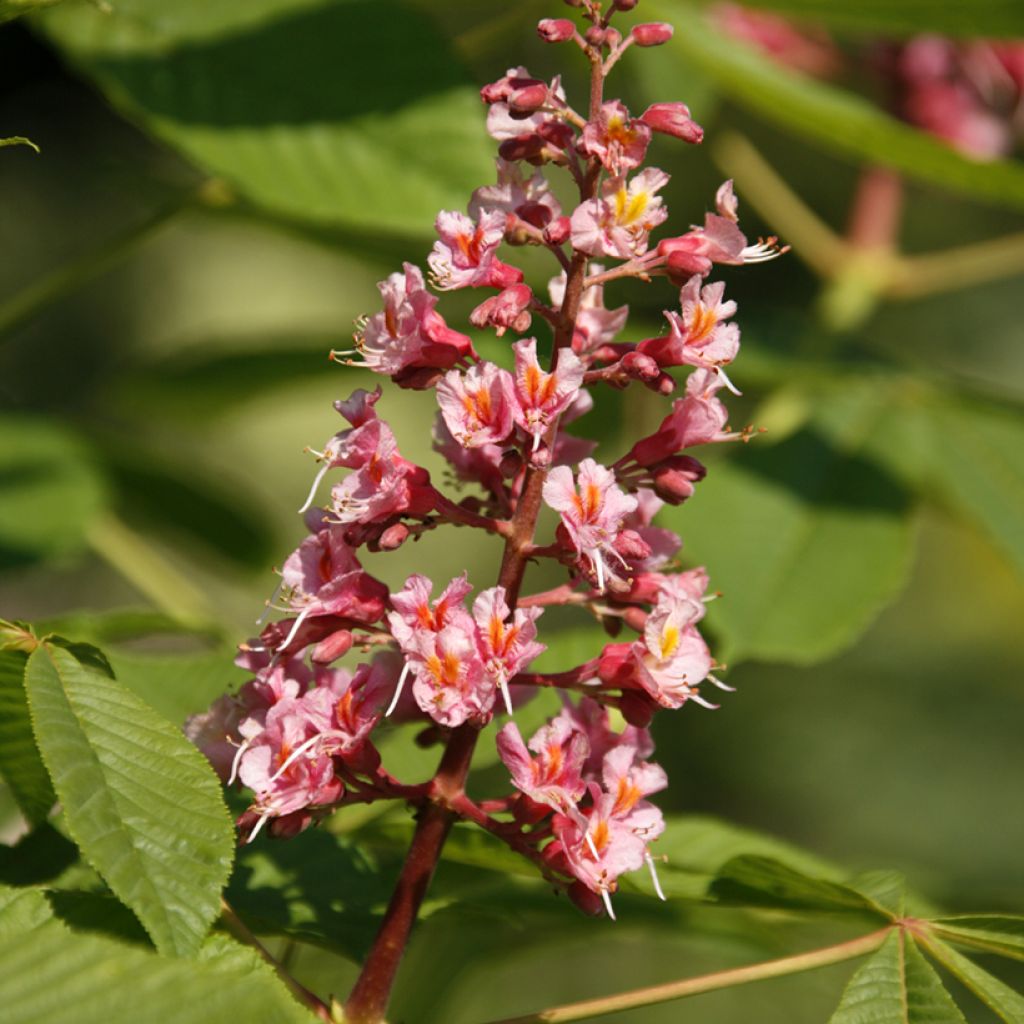

Aesculus x bushii - Bush's Horse Chestnut
Aesculus x bushii - Bush's Horse Chestnut
Aesculus x bushii
Bush's Horse Chestnut, Bush's Buckeye
Special offer!
Receive a €20 voucher for any order over €90 (excluding delivery costs, credit notes, and plastic-free options)!
1- Add your favorite plants to your cart.
2- Once you have reached €90, confirm your order (you can even choose the delivery date!).
3- As soon as your order is shipped, you will receive an email containing your voucher code, valid for 3 months (90 days).
Your voucher is unique and can only be used once, for any order with a minimum value of €20, excluding delivery costs.
Can be combined with other current offers, non-divisible and non-refundable.
Home or relay delivery (depending on size and destination)
Schedule delivery date,
and select date in basket
This plant carries a 24 months recovery warranty
More information
We guarantee the quality of our plants for a full growing cycle, and will replace at our expense any plant that fails to recover under normal climatic and planting conditions.
Would this plant suit my garden?
Set up your Plantfit profile →
Description
Aesculus x bushii is a hybrid Chestnut tree resulting from the cross-breeding between Aesculus glabra and A. pavia, two American Chestnuts. It is a deciduous tree with moderate growth, commonly planted in the USA but relatively unknown in Europe. Its main qualities are its colourful and nectar-rich spring flowering and its dense palmate foliage that changes colour in autumn. In the garden, it can be used as a shade tree or in a large informal hedge.
The Bush Chestnut belongs to the Sapindaceae family, formerly known as the Hippocastanaceae family. Under the name Aesculus x bushii, slightly different forms can be found depending on their exact lineage. The differences mainly concern the colour of the flowers, which can be more or less yellow, pink, or red, as well as the habit of the tree, which can be more or less broad. This Chestnut tree forms a trunk topped with a more or less rounded crown. Eventually, it reaches a height of 6 to 8 metres (sometimes 9 metres) with a spread of 5 metres. The growing conditions, particularly the soil fertility and moisture, significantly influence its growth. In winter, its branches bear small smooth, non-sticky buds. The leaves are bright green, compound, palmate, with 5 wide leaflets. In autumn, they turn yellow and then fall to the ground. Flowering occurs between May and late June, depending on the climate. It takes the form of flowers grouped in upright panicles. Flowers of different colours can appear in the same inflorescence, but most often they transition from yellow to pink and then red. They attract bees and other pollinators. After pollination, fruits are formed. The fruit is a more or less spiny tough capsule containing one or two seeds. The seed is toxic if ingested.
Aesculus x bushii can be used as a standalone specimen, or accompanied by large shrubs or other small trees. For example, with Flowering Dogwoods, which are interesting for their beautiful June flowering and autumn colours. Also, with purple-leaved beech trees like 'Purple Fountain' or 'Dawyck Purple'. Or even with Amelanchier canadensis (Canadian Serviceberry), covered with white flowers in spring and with colourful autumn foliage.
Plant habit
Flowering
Foliage
Botanical data
Aesculus
x bushii
Sapindaceae
Bush's Horse Chestnut, Bush's Buckeye
Cultivar or hybrid
Other Aesculus - Horse Chestnut
View all →Planting and care
The Bush Chestnut should be planted in spring or autumn in deep, preferably quite rich, slightly acidic, neutral or slightly alkaline soil. Plant it in a sunny or semi-shaded position, in a clear location so that it can be seen. This variety will be much more floriferous when planted in the sun. Water and mulch to keep the soil moist for young plants. This chestnut tree requires regular watering, especially during dry periods. However, it does not tolerate waterlogged soils, so make sure the soil is well-drained. It requires little maintenance. Light pruning can be done after flowering to maintain its shape.
Planting period
Intended location
Care
Planting & care advice
This item has not been reviewed yet - be the first to leave a review about it.
Similar products
Haven't found what you were looking for?
Hardiness is the lowest winter temperature a plant can endure without suffering serious damage or even dying. However, hardiness is affected by location (a sheltered area, such as a patio), protection (winter cover) and soil type (hardiness is improved by well-drained soil).

Photo Sharing Terms & Conditions
In order to encourage gardeners to interact and share their experiences, Promesse de fleurs offers various media enabling content to be uploaded onto its Site - in particular via the ‘Photo sharing’ module.
The User agrees to refrain from:
- Posting any content that is illegal, prejudicial, insulting, racist, inciteful to hatred, revisionist, contrary to public decency, that infringes on privacy or on the privacy rights of third parties, in particular the publicity rights of persons and goods, intellectual property rights, or the right to privacy.
- Submitting content on behalf of a third party;
- Impersonate the identity of a third party and/or publish any personal information about a third party;
In general, the User undertakes to refrain from any unethical behaviour.
All Content (in particular text, comments, files, images, photos, videos, creative works, etc.), which may be subject to property or intellectual property rights, image or other private rights, shall remain the property of the User, subject to the limited rights granted by the terms of the licence granted by Promesse de fleurs as stated below. Users are at liberty to publish or not to publish such Content on the Site, notably via the ‘Photo Sharing’ facility, and accept that this Content shall be made public and freely accessible, notably on the Internet.
Users further acknowledge, undertake to have ,and guarantee that they hold all necessary rights and permissions to publish such material on the Site, in particular with regard to the legislation in force pertaining to any privacy, property, intellectual property, image, or contractual rights, or rights of any other nature. By publishing such Content on the Site, Users acknowledge accepting full liability as publishers of the Content within the meaning of the law, and grant Promesse de fleurs, free of charge, an inclusive, worldwide licence for the said Content for the entire duration of its publication, including all reproduction, representation, up/downloading, displaying, performing, transmission, and storage rights.
Users also grant permission for their name to be linked to the Content and accept that this link may not always be made available.
By engaging in posting material, Users consent to their Content becoming automatically accessible on the Internet, in particular on other sites and/or blogs and/or web pages of the Promesse de fleurs site, including in particular social pages and the Promesse de fleurs catalogue.
Users may secure the removal of entrusted content free of charge by issuing a simple request via our contact form.
The flowering period indicated on our website applies to countries and regions located in USDA zone 8 (France, the United Kingdom, Ireland, the Netherlands, etc.)
It will vary according to where you live:
- In zones 9 to 10 (Italy, Spain, Greece, etc.), flowering will occur about 2 to 4 weeks earlier.
- In zones 6 to 7 (Germany, Poland, Slovenia, and lower mountainous regions), flowering will be delayed by 2 to 3 weeks.
- In zone 5 (Central Europe, Scandinavia), blooming will be delayed by 3 to 5 weeks.
In temperate climates, pruning of spring-flowering shrubs (forsythia, spireas, etc.) should be done just after flowering.
Pruning of summer-flowering shrubs (Indian Lilac, Perovskia, etc.) can be done in winter or spring.
In cold regions as well as with frost-sensitive plants, avoid pruning too early when severe frosts may still occur.
The planting period indicated on our website applies to countries and regions located in USDA zone 8 (France, United Kingdom, Ireland, Netherlands).
It will vary according to where you live:
- In Mediterranean zones (Marseille, Madrid, Milan, etc.), autumn and winter are the best planting periods.
- In continental zones (Strasbourg, Munich, Vienna, etc.), delay planting by 2 to 3 weeks in spring and bring it forward by 2 to 4 weeks in autumn.
- In mountainous regions (the Alps, Pyrenees, Carpathians, etc.), it is best to plant in late spring (May-June) or late summer (August-September).
The harvesting period indicated on our website applies to countries and regions in USDA zone 8 (France, England, Ireland, the Netherlands).
In colder areas (Scandinavia, Poland, Austria...) fruit and vegetable harvests are likely to be delayed by 3-4 weeks.
In warmer areas (Italy, Spain, Greece, etc.), harvesting will probably take place earlier, depending on weather conditions.
The sowing periods indicated on our website apply to countries and regions within USDA Zone 8 (France, UK, Ireland, Netherlands).
In colder areas (Scandinavia, Poland, Austria...), delay any outdoor sowing by 3-4 weeks, or sow under glass.
In warmer climes (Italy, Spain, Greece, etc.), bring outdoor sowing forward by a few weeks.






























